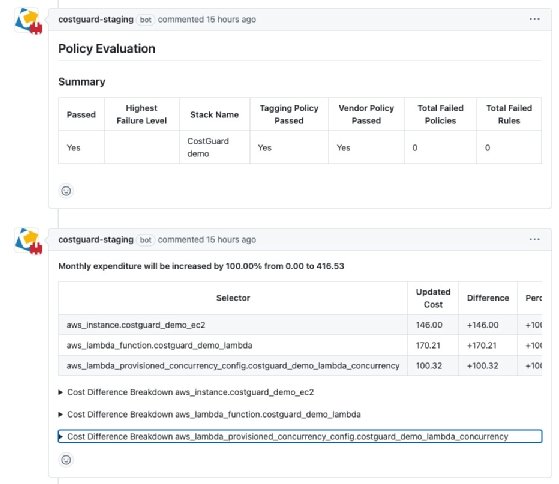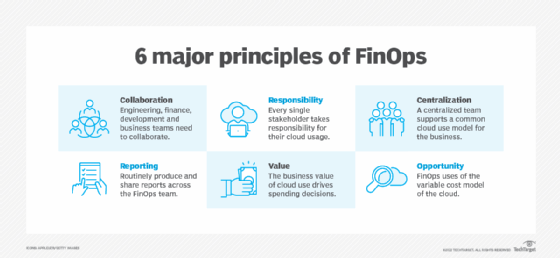
Getty Images/iStockphoto
IBM Apptio preps FinOps link with Terraform via GitHub
IBM drops another hint about its plans for HashiCorp with a shift-left FinOps integration in private beta, while tie-ins with Red Hat remain an open question.
IBM's Apptio FinOps products forged a fresh connection with HashiCorp this week via tie-ins to the Cloudability cloud cost management tool.
CostGuard, due out in private beta this quarter, will be packaged as a GitHub app that surfaces cost information about cloud resources as a validation check before developers deploy resources, such as Elastic Compute Cloud instances, as part of an application. The cost data will come from within infrastructure-as-code tools, including HashiCorp's Terraform.
CostGuard and the IBM Concert AIOps tool previewed in May offer a further glimpse into where IBM's $6.4 billion acquisition of HashiCorp will fit after its anticipated close by year's end. Industry watchers, however, were divided on the usefulness of shift left in FinOps.
"If you go back to where costing decisions happen, it's almost always at the engineering [stage of a project] -- how they choose to provision resources, how they choose to build out their applications, workload placement," said Tracy Woo, an analyst at Forrester Research. "Every keystroke, every button click has a cost behind it ... If you can proactively reach out to the engineer, it can help them be more cost-conscious."
CostGuard won't be alone among DevOps tools that deliver cost data to developers. Vendors such as Harness have offered cost management integrated into continuous deployment pipelines for years. But as platform engineers take over infrastructure decisions at many large enterprises, another industry analyst was skeptical about whether developers will control cloud infrastructure cost decisions, especially at the individual instance level, where CostGuard operates.
"This could be interesting if they were shown what service alternatives would meet their needs, like using Redshift instead of Snowflake," said Rob Strechay, an analyst at TheCube Research. "But the practicality of the dev caring or changing out major infrastructure pieces to lower costs proactively -- I am sure some companies will love this, but they might be few and far between."

IBM FinOps expands, reckons with complexity
CostGuard was part of a group of updates this week to the IBM Apptio technology business management suite, which also included early access to a new tie-in between the IBM Turbonomic cloud automation product and Apptio Costing data.
Expanded connections are now available between Cloudability and data warehouses from specialist cloud vendors such as Snowflake and Databricks, MongoDB's database as a service, and Datadog observability. IBM Apptio also expanded its partnership with Microsoft to make its FinOps tools available in the Azure Marketplace, beginning with its Targetprocess Agile planning SaaS.
Cloudability now includes carbon emissions reporting and ingests FinOps data via the FinOps Open Cost and Usage Specification (FOCUS) standard data specification. Cloudability also now has an AI assistant based on IBM Watsonx, which will expand to the rest of the Apptio suite in the first quarter of 2025.
Finally, IBM is rolling out a streamlined version of Apptio called Apptio Essentials, which comes with built-in data sets that make it easier for users to get started with the product.
These moves address common analyst critiques of the IBM FinOps suite -- namely that it's too complex, it's difficult to use, and it lacks full integration among its many products.
"The biggest question is that outside the Apptio and Turbonomic integration, there is still a lot of complexity to the entire set of suites that makes it hard to know what to deploy and what to use," Strechay said.
For this reason, other products in the IBM Apptio portfolio all require IBM professional services engagements, according to Woo, which only adds to their cost.
"IBM Apptio has lots and lots and lots of capabilities, but it's hard to navigate ... and it can be very expensive," she said.

Cloud cost management with automation teeth
Strechay called the Turbonomic and Apptio integration and expansion of connectors to FOCUS data and specialist services "an exciting advancement."
"We know that there are pricing complexities with Snowflake, Databricks and others -- this is a top-of-mind topic for most organizations as they choose their AI data platform," he said. "The IBM Apptio and Turbonomic [integration] enables actions that can be taken to control costs -- this is the holy grail for organizations."
Integration between Cloudability and developer tools such as Terraform points to a similar attempt to connect cloud cost management with automation to make FinOps practices more than just academic, said Rick Villars, chief analyst at IDC.
"Especially with new AI apps, people say, 'We want to have automation as part of the inherent initial design,'" Villars said. "'We're not going to jury-rig manual processes and automate later.'"
Given the focus on cloud automation to add weight to FinOps controls, a major question remains open in how IBM might integrate Apptio, Concert and HashiCorp with Red Hat infrastructure automation, beyond potential tie-ins between Terraform and Ansible.
"If the end goal for this is building in automation by design, there's a lot of work that could be done to make that just a part of what you expect out of products from both the IBM portfolio and the Red Hat portfolio," Villars said.
Beth Pariseau, senior news writer for TechTarget Editorial, is an award-winning veteran of IT journalism covering DevOps. Have a tip? Email her or reach out @PariseauTT.







